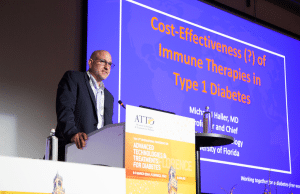Prophecy was given over to fools, yet we are all trying to provide our analyses of what will happen in the future. In the following article, the main trends anticipated for the meetings world are explored and discussed.
E-education
Technology advancements will enable the spread of meeting content to potential consumers (doctors). The availability of high quality educational content will enable associations to (a) brand themselves, (b) attract more potential participants to their activities, and (c) generate revenue from a new source (sale of content through the internet). Pioneering projects of this nature are gaining momentum on the internet. Modules of selling content in the form of CDs and DVDs have already existed for some time.
Cross Continent Markets
The trend of Asian participation in leading brand European meetings will continue. Associations that will be able to market themselves in the respective markets will enjoy further prosperity due to the significant growth in the Asian and Eastern European markets. The trend will last for approximately the next 5-10 years, until these regions develop their own competitive products (meetings). The trend already exists in some brands, where a significant participation of Asian markets has already become a fact.
Virtual Communities
The introduction of virtual communities will turn the congresses into the main highlight of activities of these communities. For example, doctors could discuss posters before and after the meeting and not only during the meeting itself. Doctors will anticipate having the information available before meetings and remaining available for further review afterwards. The potential growth is significant, due to the exposure of the flagship product (the meeting) to a larger market share. Associations that do not form a part of such communities may end up with a significantly lower profile and thus less market dominance.
i-Technology
Use of new technological features like eBooks and iPads will enable participants to significantly increase networking at meetings. The introduction of such technology, adjusted to a meeting’s needs, will create a class of meetings with a significant added value of one of the most important decision making factors for participation – networking. For example, participants could request meetings with colleagues, hold discussions ad hoc and receive information on line on current activities at the meeting. Meetings that do not employ such technology will be considered less attractive to advance participants (e.g. like comparing the change from slides to video projection in the ’90s).
Scientific Village / Exhibition Decrease
The anticipation of self and external regulation of the Pharma-industry, which already started in the US and is likely to continue in Europe, may have a negative effect on the existing exhibition format. It is reckoned that companies may decrease the size of their commercial exhibition and may either cut or move the budgets into a scientific type of support.
The ‘Scientific Village’ concept is still under development and will be presented later this year. The concept focuses on selling scientific products to the industry. Such products could be demonstrated through a ‘Hyde Park Speaker’s Corner’ with time slots allotted to companies, a library to support exchange and presentation of books by publishers, and much more. The concept will only be executed following a policy change or relevant legislation in the EU.
Grants / Sponsorship Cuts
The same principle of cost cuts and legislation may also apply here – the industry may cut the perceived non-scientific support. Furthermore, the industry may wish to limit support to meetings which focus on science rather than activities which are already debatable in some cases, such as social events (e.g. gala dinner as a part of the registration fees will no longer be permitted). While this is a significant threat, such an action can also present an opportunity. Companies are likely to make grants more readily available for meetings which will meet their requirements. Meetings will also be able to cut cost and potentially make knowledge accessible to more doctors through lower registration fees.
CME
The introduction of a compulsory CME program throughout Europe will encourage participation and consumption of educational material through the internet. The likelihood of additional numbers of doctors actively seeking education is very high. Furthermore, associations are likely to develop focused CME activities in the form of monothematic meetings and E education (e.g. Webinars).
Support of participants by the industry
While being one of the more severe threats to the entire congress industry, the likelihood of such an overall ban is not high. Nevertheless, a limitation on funding support of participants in meetings in one format or another is a perceived risk. Such a limit could come in the form of a limited support to active participants (speakers, authors of abstracts etc.) or by budget to support number of days (which may require an adjustment of the program to reflect such limitations).
Dan Rivlin– CEO of Kenes Group













